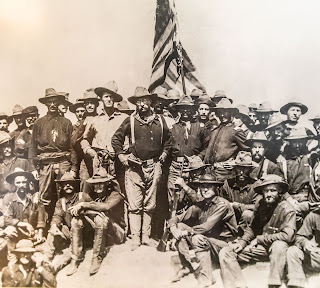July 1, 1898: The Battle of San Juan Hill

July 1, 1898: The Battle of San Juan Hill is fought near Santiago, Cuba, as part of the Spanish-American War. This battle has become part of the myth of American greatness, military and civilian. The truth is a bit more complicated. In the 1890s, the people of Cuba rebelled against their colonial overlords from Spain. Many Americans wanted to go to war to free Cuba. Most of those, however, were business lords who wanted to exploit Cuba's natural resources, without Spain keeping them out. They had tried to make deals with Spain, and failed. So they needed to get Spain out of Cuba. All they needed was an excuse. On February 15, 1898, they got their excuse. The battleship USS Maine was berthed in Havana Harbor, when there was an explosion, killing 261 sailors. An official U.S. Navy investigation ruled that an external mine caused the explosion. Witnesses among the American survivors denied this, and a much more likely cause for the explosion was a coal fire in the boiler....






